Commissioning new decorative plasterwork
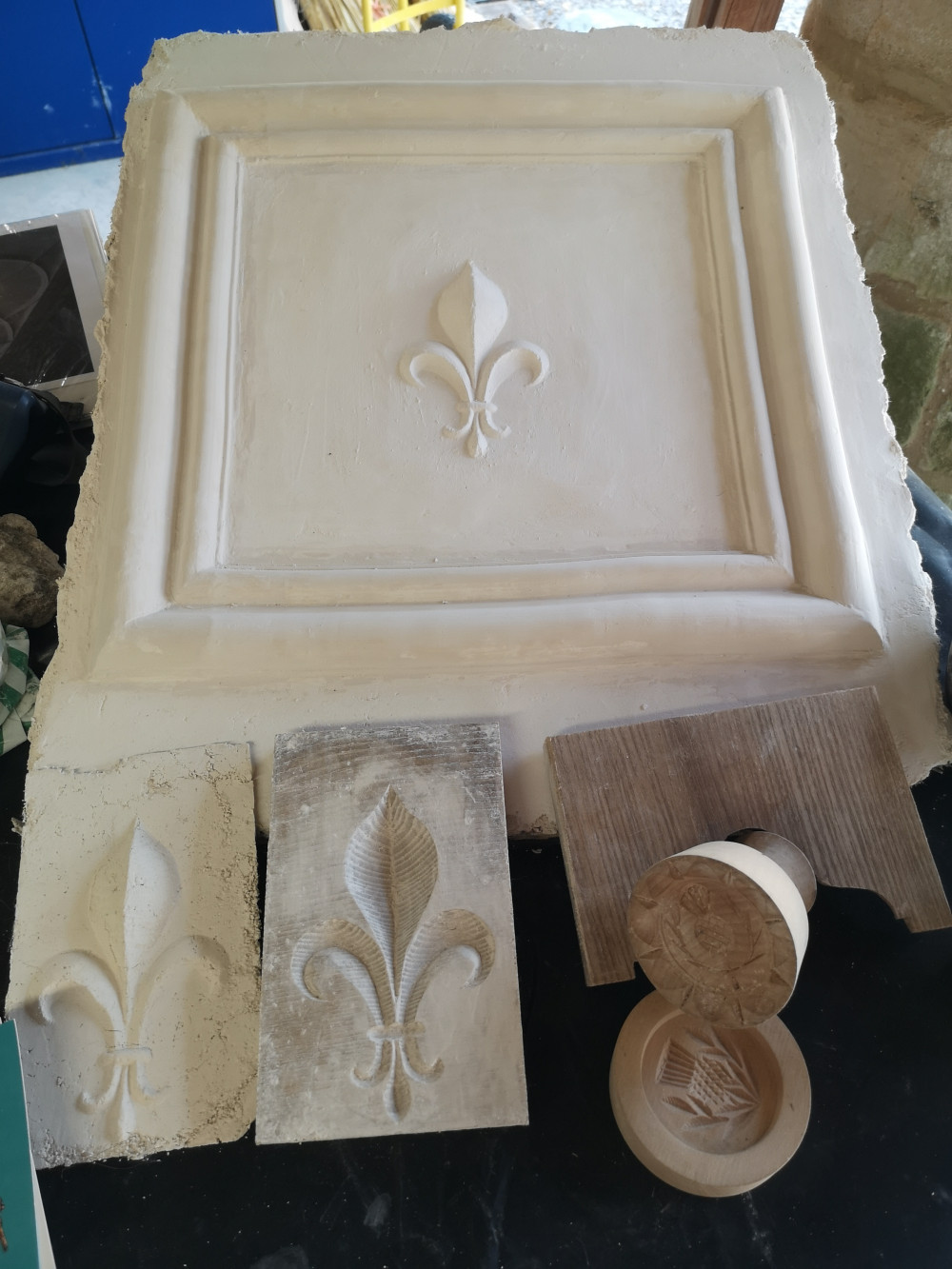
Decorative lime plasterwork was once found throughout homes in the UK whether they were grand or poor. Overtime decorative elements have been lost to changing fashions and the lack of available skill to repair them.
It is our passion to restore and help bring about a revival of the traditional craft of modelling and casting with plaster in situ. The term for the craft was once known as ‘Plaistering’ and is still known to some as ‘Pargetry’.
The trade and methods for decorating with plaster have evolved over time. They have shifted away from modelling plaster in situ towards manufacture and installation. This is in line with the shift away from lime and with the widespread availability and versatility of gypsum. Since the Victorian era the market for decorative elements has been dominated by fibrous pieces cast from plaster of paris with hessian fibre for reinforcement. These pieces set hard in 20 minutes and are then sent to site for installation once dry. The Elizabethans, however, modelled with their haired lime in situ and cast their enrichment by pressing doughy plaster into a wooden mould and then applying to the plastered surface.
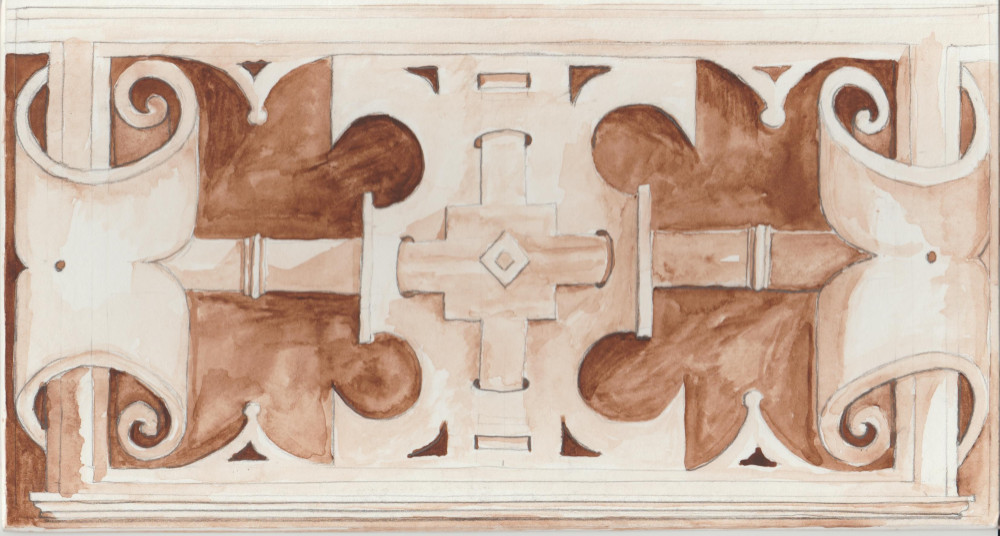
What is special about pargetry is the wide array of style and artistic expression of the pargetter/Plaisterer. Regions often have their own styles of the craft and a popular pargetter’s work can be identified on numerous buildings by their signature style and moulds.
When starting a new comission, research is carried out into what remains of the craft in the client’s local area to get a sense of the vernacular. The name, use and prior purpose of the building can all be used to inform a design. Whilst heraldry and family emblems were popular themes for the elite tudor, butter stamps were often impressed in setting plaster in farms.
A maquette sample is then made for the client, this informs the quote and is an easy stage to make adjustments.
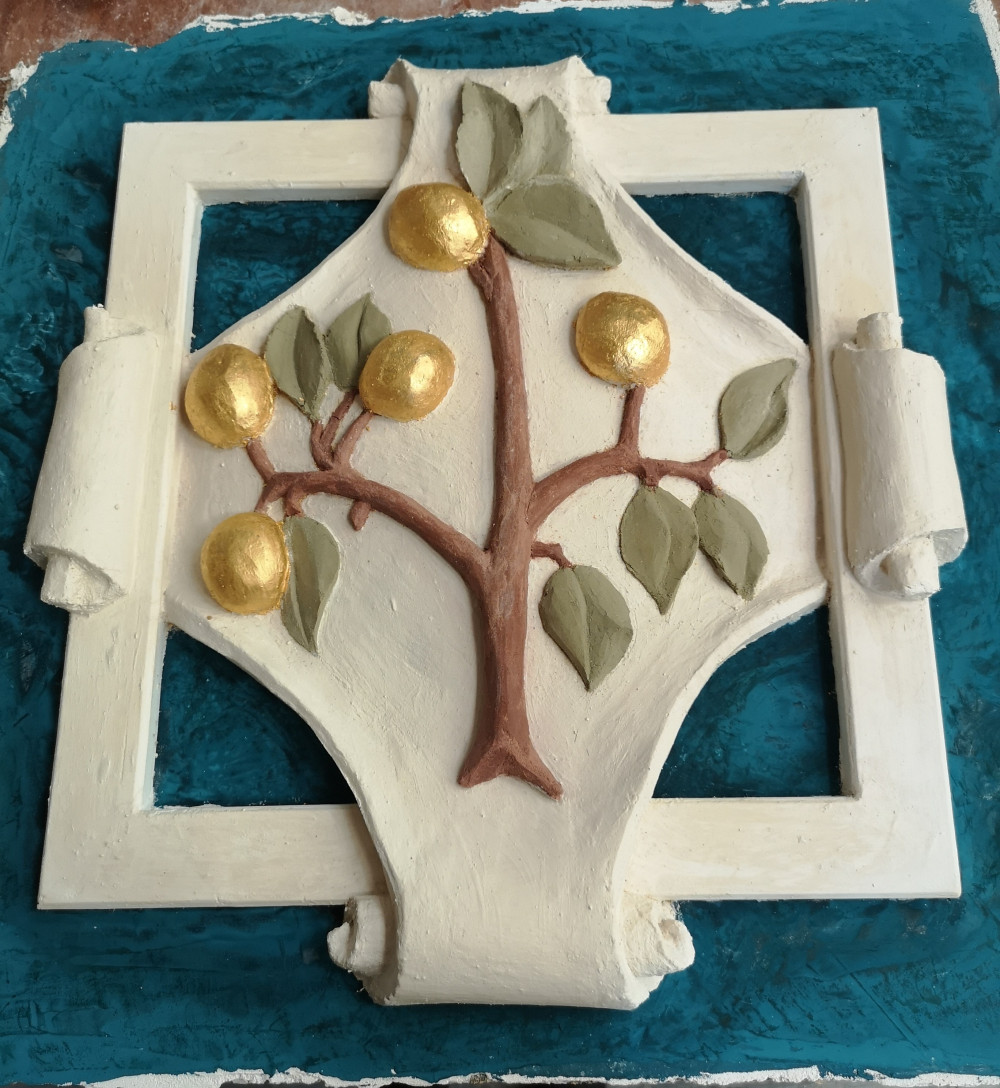
Arts and Crafts design by Bankart.
Popular places for adding decoration and interest to a room:
Ceilings

Cornice
A cornice covers the join between the wall and ceiling where cracks were prone to appear.
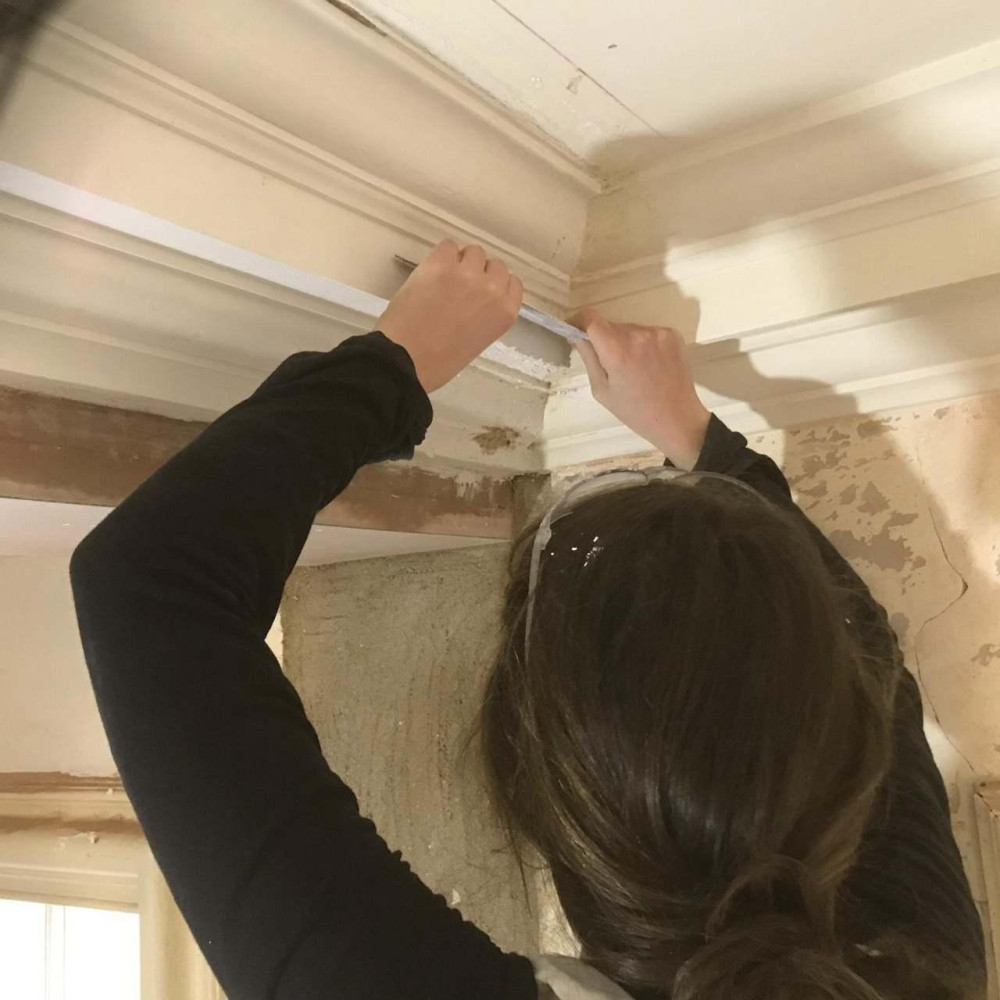
Frieze
A frieze is a repeat pattern that travels around the top of the wall, it offers a great opportunity for a modelled scene of plants, animals and mythical beasts.

Fireplace
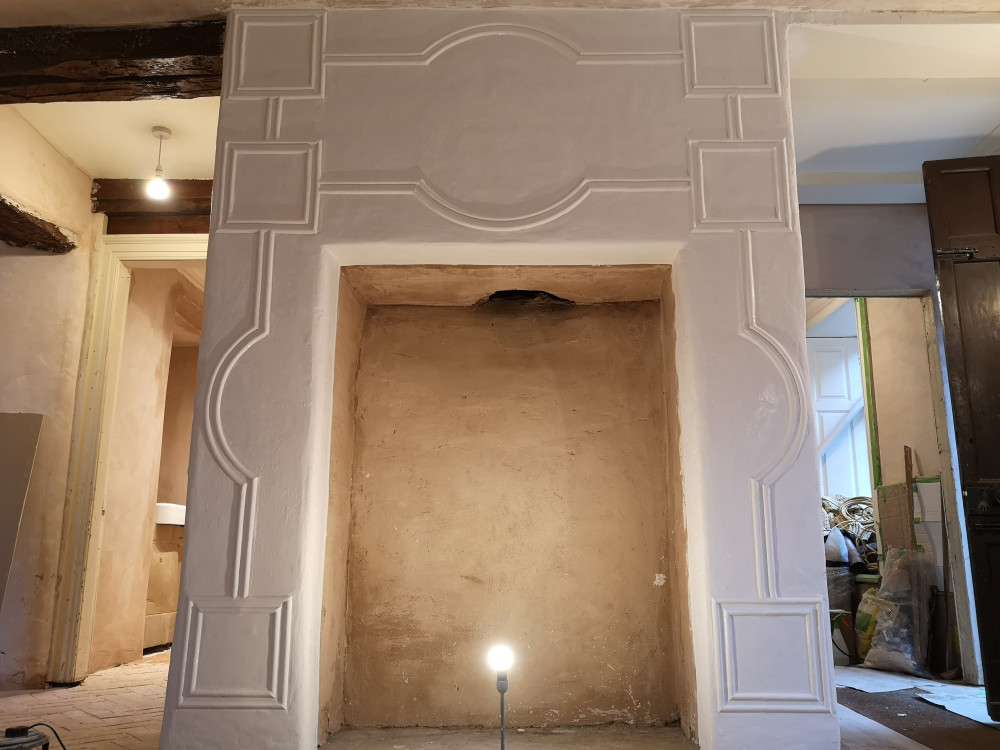
Overmantel
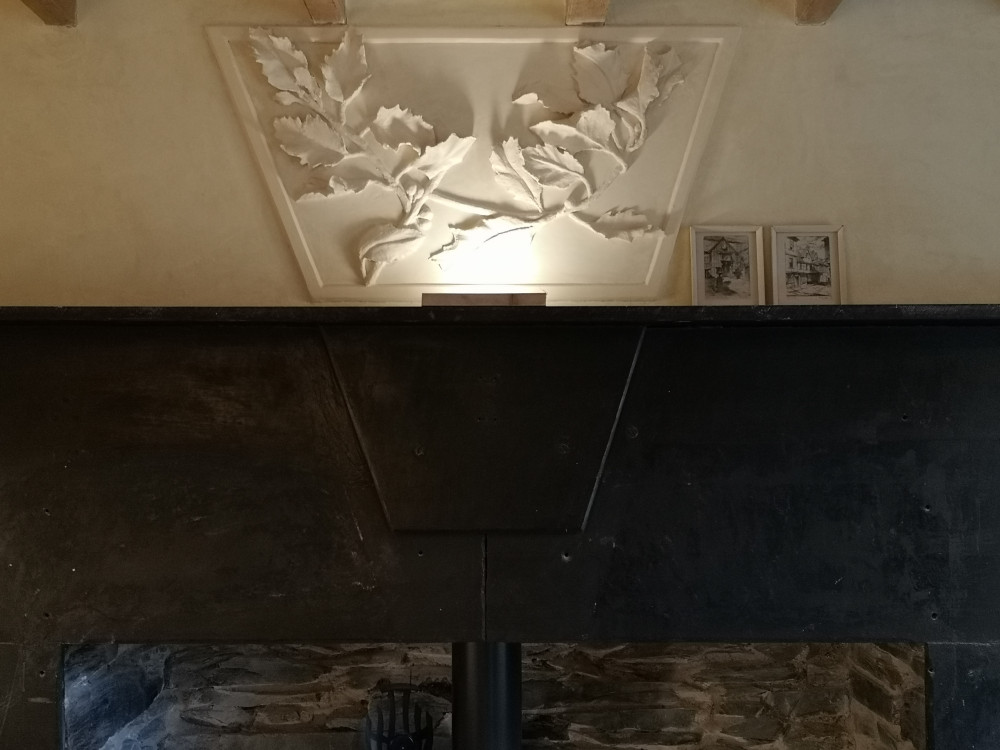
Below staircases
Sloping ceilings below staircases offer a neatly framed canvas for plaster. The plaster in turn makes a feature of the surface and ties the all the elements of the space together, the detailed carpentry of the stair and the transition between the room you're leaving and the space you're being led into.

If you have an idea or space you want to embelish with plaster details get in touch.